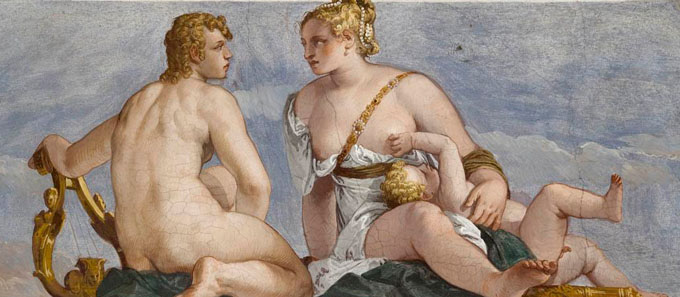
Study Day: Daniele Barbaro. Architect of Knowledge

Picture: Paolo Veronese, Venus and Apollo with Cupid. Maser, Villa Barbaro
As part of the activities promoted by the Regional Committee for the Celebrations of the 500th Anniversary of the Birth of Daniele Barbaro (1514-1570), the Institute of Art History has organised a study day on the man who was arguably the most important humanist in mid-16th-century Venice.
The celebratory events for Barbaro’s fifth centenary include the fascinating exhibition on the second floor of the Palazzo Cini featuring paintings by Titian and Veronese (open until 15 November 2015.
For scholarly and popularisation purposes, the meeting will illustrate many aspects of Barbaro’s cultural activities as a major influential and multifaceted intellectual in 16th-century Venice.
Internationally renowned scholars and experts will present papers examining and shedding new light on some lesser-known aspects of contemporary Venetian art, literature and science through the fascinating figure of the patrician intellectual. The themes include his production of treatises, with a special focus on Vitruvius and the science of perspective; his role in the development of classical Venetian architecture, closely linked to ideas shared with Andrea Palladio; his activities as an expert on iconography and a patron, as well as discoverer of talents, such as Paolo Veronese. Discussions will also touch on the historical figure of Barbaro as a diplomat, Patriarch of Aquileia and leading player at the Council of Trent.
Moreover, the study day sets out to promote an overall reassessment of the issue of the relations of Daniele and his brother Marcantonio with the architects and artists of the day in terms of cultural influences and patronage. Barbaro will also be analysed, however, from multiple points of views to encompass all his diverse interests. This means considering his role as an ideologist and promoter of the arts and his various theoretical and practical contributions in the context of Renaissance science – such as his formal rules on a mathematical-geometrical basis for perspective, improvements to the camera obscura and its practical applications, and the construction of sundials and instruments for topographical and astronomical surveys – as well as his contribution in the field of music theory.
